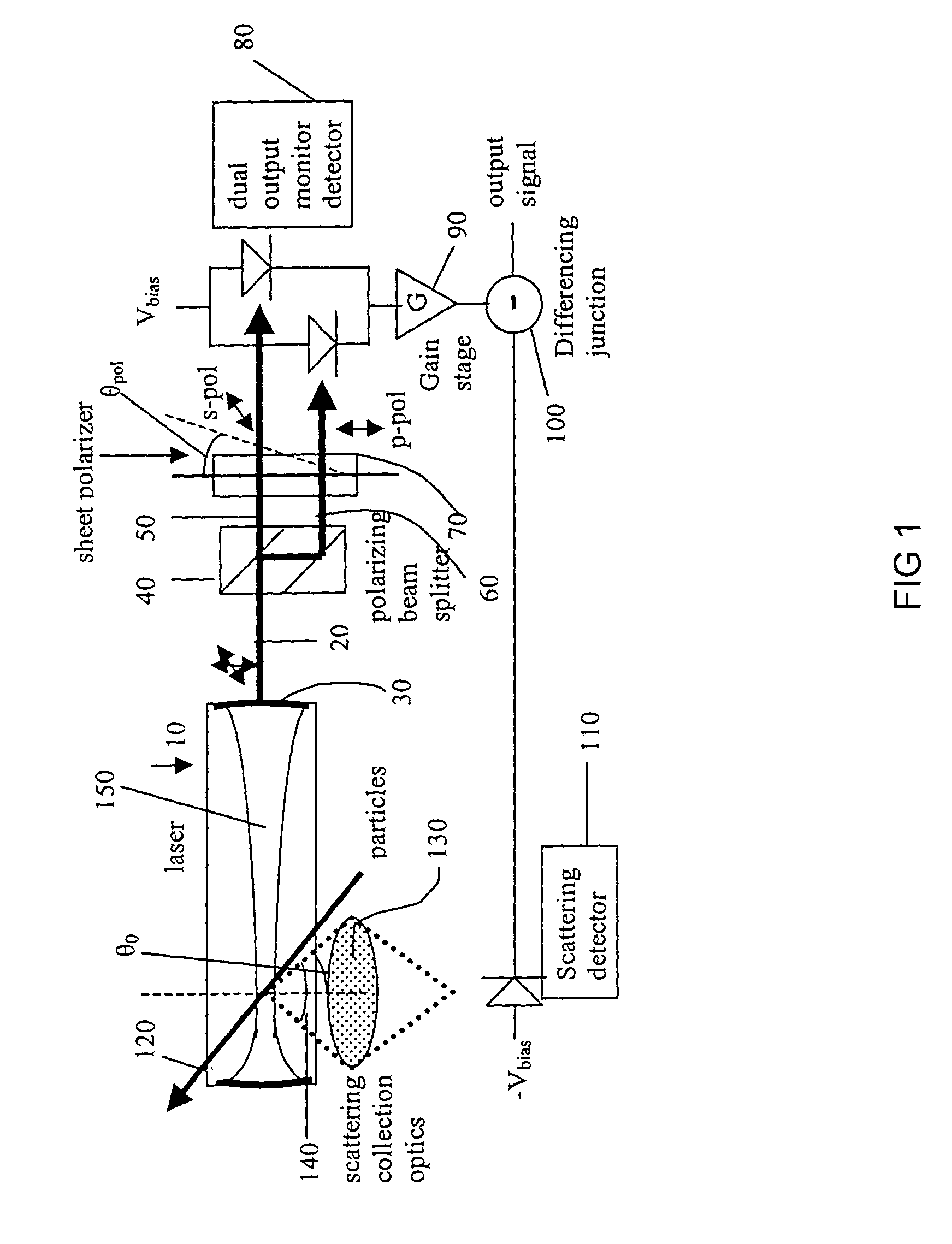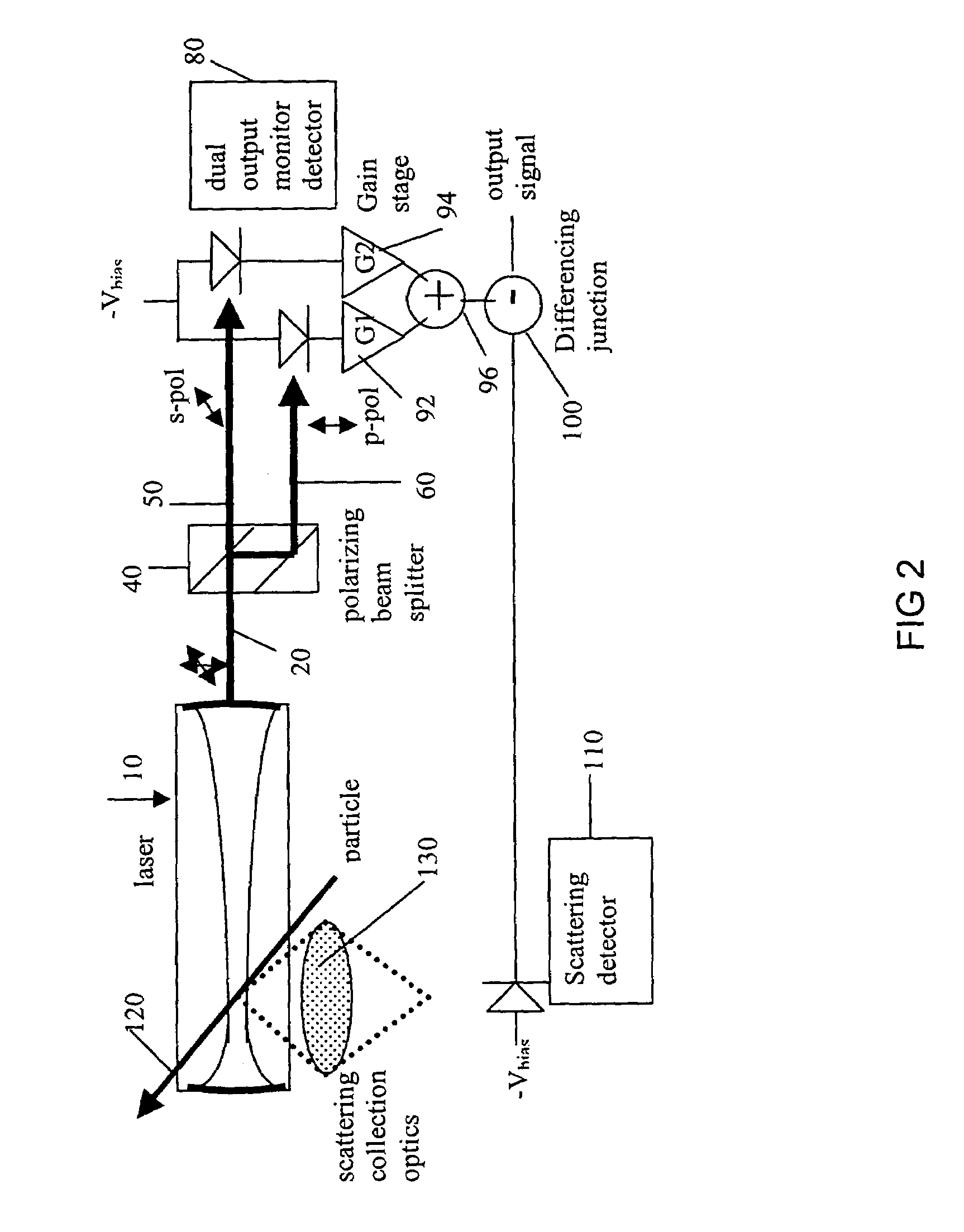Method of noise cancellation in an unpolarized-laser instrument
a technology of laser instruments and noise cancellation, applied in instruments, optical radiation measurement, therapy, etc., can solve the problems of increased particle size, reduced instrument sensitivity, and increased noise reduction, so as to improve the signal-to-noise ratio and improve the effect of noise cancellation
- Summary
- Abstract
- Description
- Claims
- Application Information
AI Technical Summary
Benefits of technology
Problems solved by technology
Method used
Image
Examples
second embodiment
[0035]In a second embodiment, shown in FIG. 2, the instrument is the same as shown in FIG. 1, except the sheet polarizer is removed. The spatially-separated s- and p-polarization components each illuminate their own detector. Each detector is then electrically connected to its own gain stage (92 and 94). The two gain stages G1 (92) and G2 (94) together provide both relative control and overall control and are set appropriately for maximum noise cancellation. The two gain stages are electrically summed (96) and then sent on to differencing junction (100).
third embodiment
[0036]In a third embodiment, shown in FIG. 3, there is only a single polarizer (70) (which can be a sheet polarizer or other polarizer, as known in the art) and a single detector (82). There is thus no separation of the s- and p-polarization components. In the embodiment shown in FIG. 3, the angle of the polarizer 70 and the gain 90 are set so that the signal at 82 is the same as the signal at 110 when no particles are present in laser 10.
[0037]The first two embodiments described give noise cancellation of about a factor of 10 as compared to an uncorrected system. The third embodiment described gives a lower level of noise cancellation.
[0038]In a specific preferred embodiment, the invention is incorporated in an instrument based on a Helium-Neon laser used to detect and size particles passing through the intracavity laser beam. The laser cavity is formed by two mirrors, both of which have reflectivities around 99.99%. The intracavity power is on the order of 40 Watts. Some of the li...
PUM
| Property | Measurement | Unit |
|---|---|---|
| diameter | aaaaa | aaaaa |
| power | aaaaa | aaaaa |
| diameter | aaaaa | aaaaa |
Abstract
Description
Claims
Application Information
 Login to View More
Login to View More - R&D
- Intellectual Property
- Life Sciences
- Materials
- Tech Scout
- Unparalleled Data Quality
- Higher Quality Content
- 60% Fewer Hallucinations
Browse by: Latest US Patents, China's latest patents, Technical Efficacy Thesaurus, Application Domain, Technology Topic, Popular Technical Reports.
© 2025 PatSnap. All rights reserved.Legal|Privacy policy|Modern Slavery Act Transparency Statement|Sitemap|About US| Contact US: help@patsnap.com



